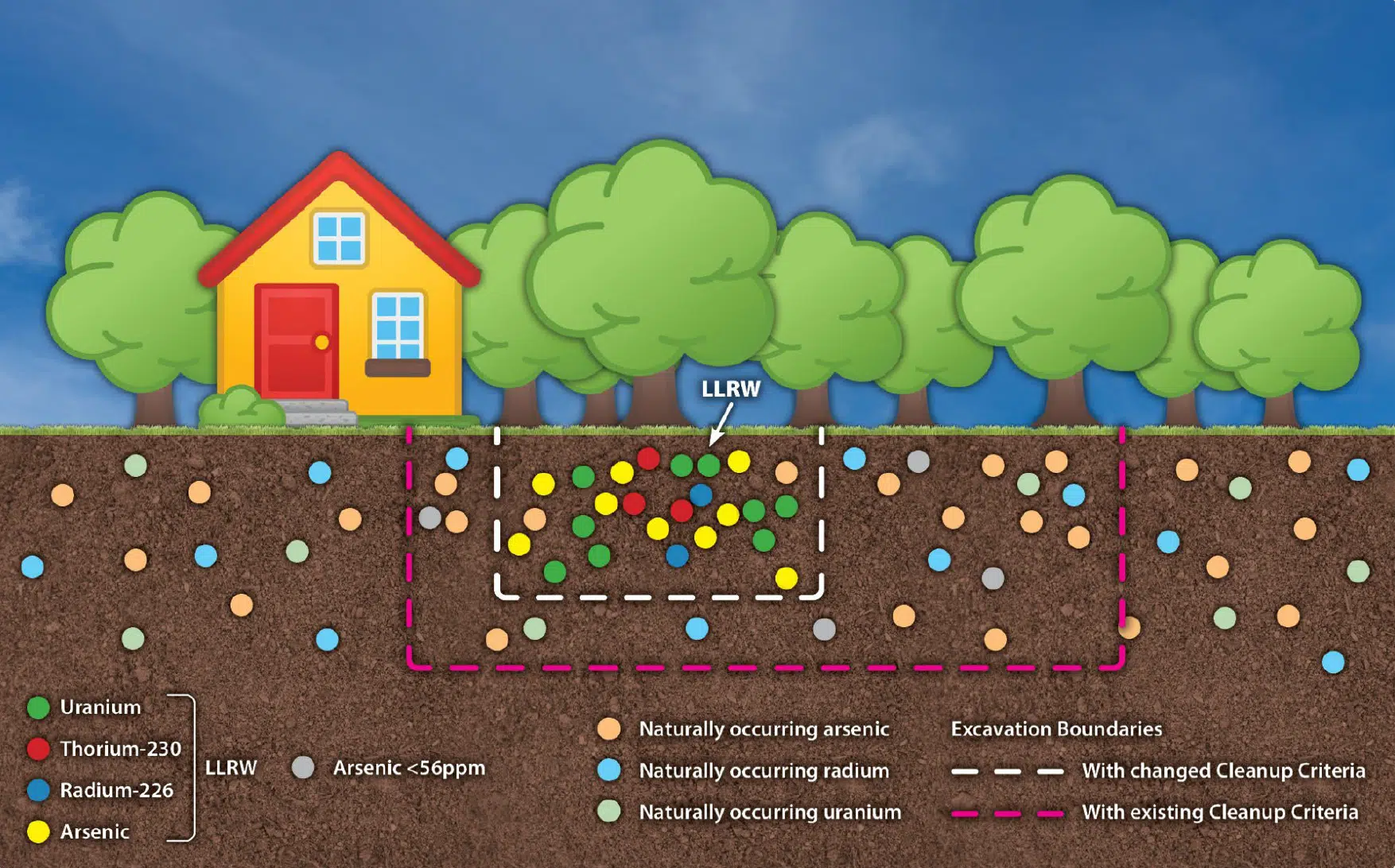Atomic Energy of Canada presented to Port Hope Council on the Port Hope Area Initiative last night.
Low-level radioactive waste first came to Port Hope in the 1920s to produce radium which at the time was considered a wonder cure. The soil leftover from the extraction process was provided at no cost as backfill for a number of projects in the area including the Lions Park, Chemetron Lagoon, the Coal Gasification Site, the Sewage Treatment Plant, the Centre Pier as well as many residential projects.
In the 70s, 100,000 cubic metres were removed to temporary storage with the debate on where it would ultimately end up taking the decade between 1986 and 1996 to come to no clear decision.
In 2001 a legal agreement was reached between the Government of Canada and the municipalities of Port Hope and Clarington to remediate the area and Atomic Energy of Canada Limited provides oversight to Canadian Nuclear Laboratories that have the task of working on the sites.
By 2011 that work had begun in earnest, according to AECL’s Director of Decommissioning and Remediation, Dr. Jim McCafferty who gave a presentation on January 24th to Council on where AECL is at with its work on the Port Hope Area Initiative.
The PHAI is the largest project of its kind in Canada. It has three phases. The first was environmental assessment, design, regulatory review and licensing which is complete. Phase two is in progress which involves the cleanup and storage of literal tonnes of low-level radioactive waste. The Welcome containment site was completed last year and all remaining PHAI projects will be completed or begun before the end of the year. Phase three will be the long-term monitoring and maintenance of both facilities in Port Hope and Port Granby, and by long term – they’re planning for centuries to come.
The main issue Dr. McCafferty presented to Council was one of the scale of the remediation particularly the arsenic which, should the clean-up criteria for the remediation remain at 18 ppm (parts per million) some of the work they need to do won’t even be possible.
Port Hope has naturally occurring arsenic of 5ppm to 23ppm. ACEL are hoping to have the threshold raised to 56ppm.
This would considerably affect the amount of work required to complete work on the larger sites not to mention the 1270 properties they’ve identified that are yet to be remediated – a process that under the existing criteria will take decades to complete if it’s even possible due to the level of natural arsenic in the area.
According to Dr. McCafferty 56ppm for arsenic represents a marginal change in the risk to the public compared to 18ppm (0.000018 to 0.000021 to be precise).
Trees and timelines are key factors of Port Hope Area Initiative for local residents.
Councillor Claire Holloway Wadhwani said these were the biggest issues she’d heard from constituents.
Dr. McCafferty said without changing the clean-up criteria, the number of trees and the amount of time would both be affected, but raising the permitted amount of arsenic could speed the process and have little effect on public safety.
He cited projects similar to Port Hope that have been cleaned up with higher levels of arsenic like Deloro at 111ppm, Falcon Bridge at 78ppm and Balmerton at 58ppm.
McCafferty said that he would like to see a year’s work and come back to Council with realistic targets based on real data.
Written by Joseph Goden
